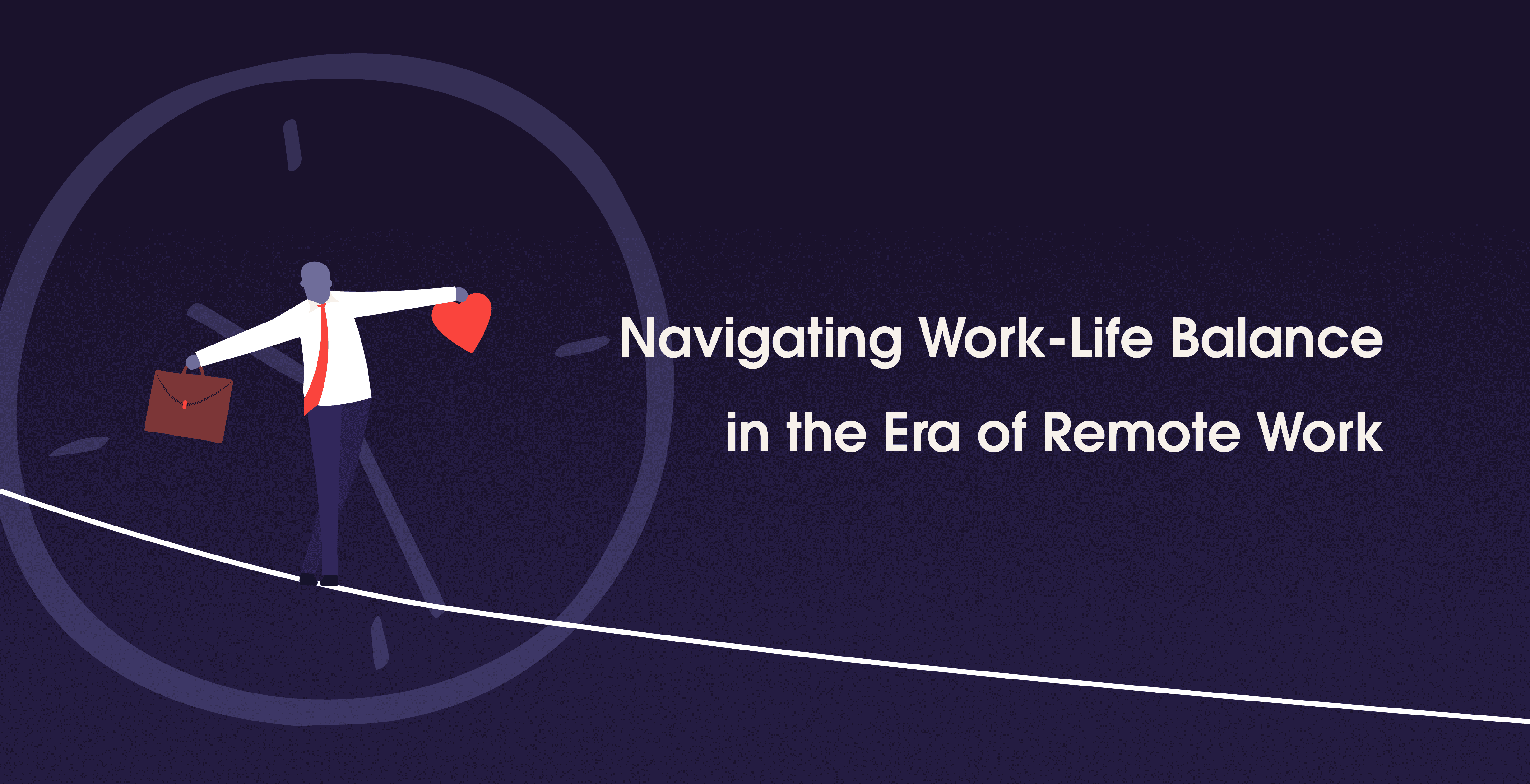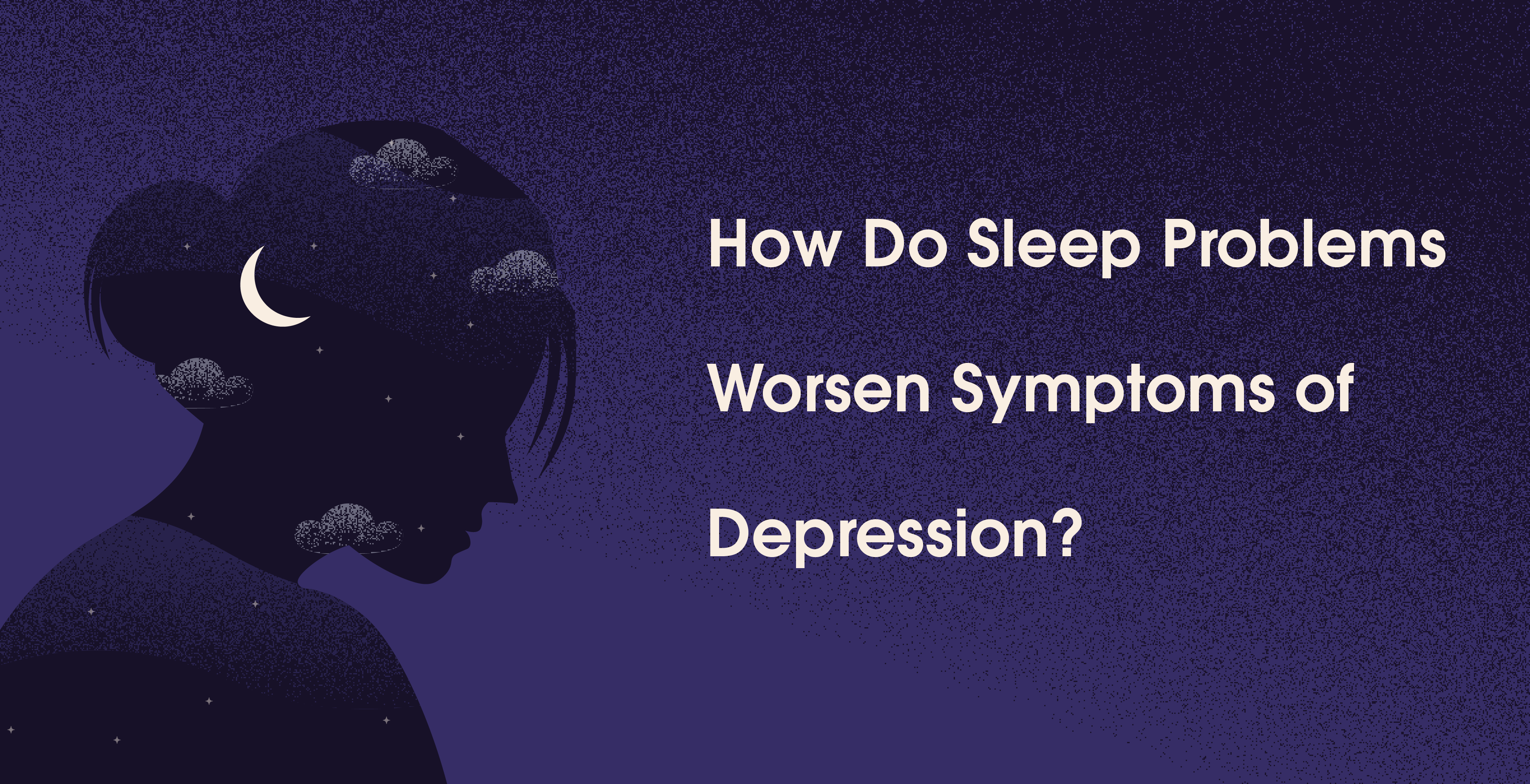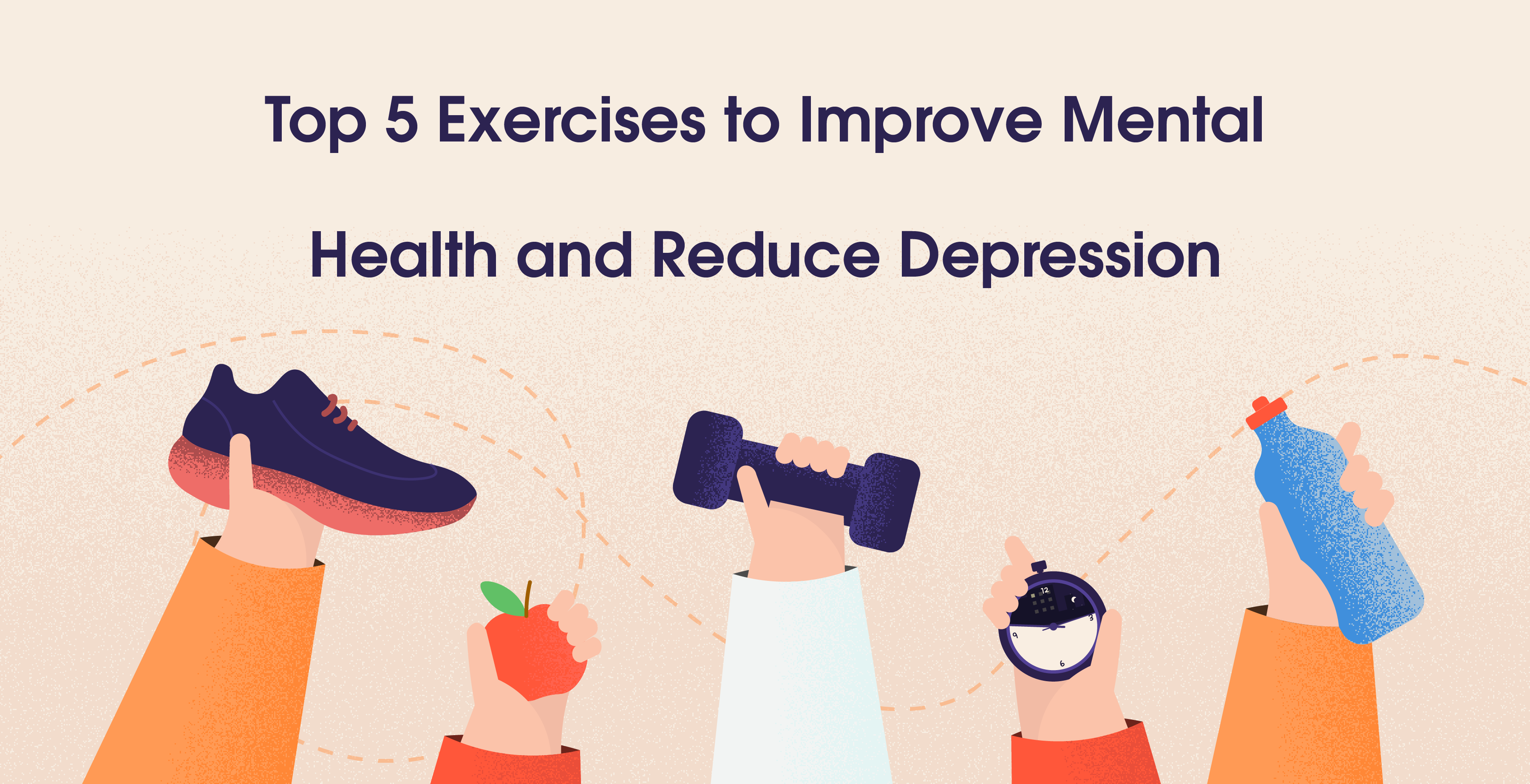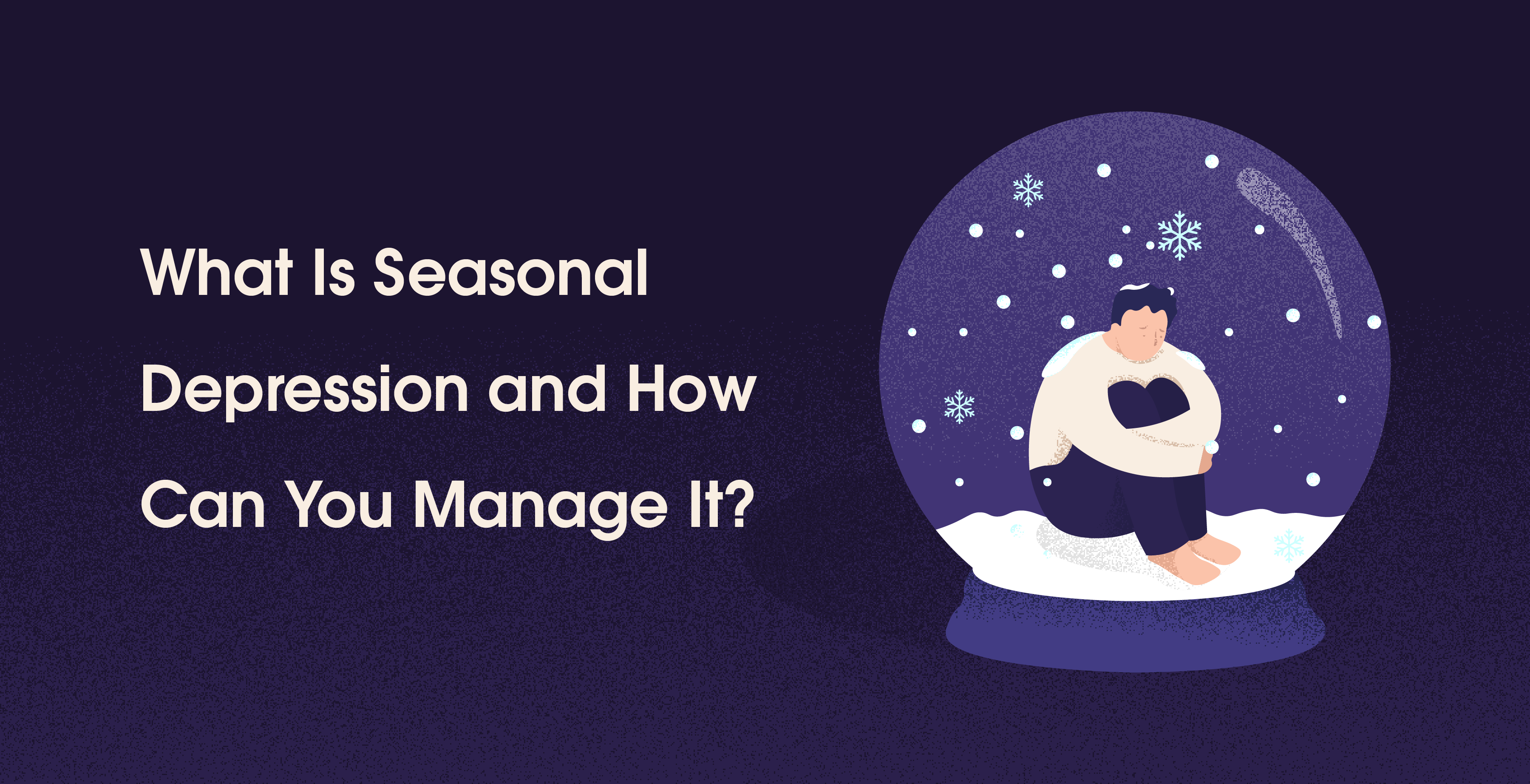Navigating Work-Life Balance in the Era of Remote Work
Oct 14, 2024
Aparna Hurtis



Table Of Contents
With Covid, it gave rise to a Global shift in the way we work, we shifted to working from home or as we know it today remote work. With this came a new challenge - burnout! It is not like it didn’t exist before - it got amplified as the lines between work and home is a blur. More of us are dealing with exhaustion, reduced productivity, and declining mental health. But fear not - with the right strategies in place, you can thrive in the world of remote working without sacrificing your well-being.
Highlights -
The surprising causes of remote work burnout you might be overlooking.
5 research-backed strategies to reclaim your work-life balance.
How to recognize burnout symptoms before they derail your career
Expert tips for staying motivated and connected in a virtual environment.
The critical role your home office plays in preventing burnout.
Why addressing remote worker burnout benefits both employees and employers.
The perfect storm - Why remote workers are burning out.
With the lines between work and home becoming blurry, it has given rise to a host of new challenges. It has become the perfect catalyst for burnout! Here are some of the key contributors that conspired to this perfect storm for employees -
The Never-Ending Workday
Without the physical act of leaving the office, employees working remotely often struggle to “switch off” for the day. In a study by Buffer, it was found that 27% of remote workers said that unplugging is their biggest challenge. The constant connection can lead to what the WHO now recognizes as an “occupational phenomenon” - burnout! (WHO, 2019)
Isolation - The Silent Productivity Killer
With the lack of Social interaction in remote work, it can take a toll on the employee, the Gallup research shows that isolation not only affects well-being but can also reduce productivity by up to 21%.
Screen Time Overload
It is real you guys! It’s called the “Zoom Fatigue” and it is draining! Harvard Business Review reports that constant video calls and the stress of it can lead to physical and mental exhaustion.
The “Always On Trap”
Employees feel added pressure to constantly be available, which can lead to what psychologists refer to as “telepressure”, which is attributed to burnout.
The Sedentary Lifestyle
Remote work can often mean less physical activity, which has been seen to harm both the physical and mental health of employees.
The perfect storm is complete! And, with that we can move on to looking at how we can identify the triggers and work toward fixing it.
The Red Flags
Burnout contrary to popular belief isn’t just about feeling tired, here are some red flags to watch out for -
Emotional exhaustion -
It is the constant state of emotional depletion, which is often caused by prolonged stress. It commonly manifests as feeling drained and overwhelmed, making it hard to cope with everyday tasks. Over time it can lead to detachment from feelings, decreased productivity, and difficulty maintaining relationships.
Detachment from work or Cynicism
Detachment from work occurs when employees become weary of their jobs, leading to negative feelings/attitudes and a sense of detachment. This can result from a perceived lack of purpose or meaning in their work, causing them to distance themselves emotionally.
Reduced Professional Efficacy
It is the feeling of incompetence or a decline in job performance. With burnout, it can lead to doubting their skills, struggling to meet expectations, and feel ineffective, even in tasks they once excelled at.
Physical Symptoms
Burnout can manifest as frequent headaches, sleep disturbances like insomnia or poor sleep quality, and fatigue. These physical issues can exacerbate emotional and mental strain, creating a cycle of exhaustion.
The feeling of “Languishing” or Stagnation
Languish is described as the sense of lack of purpose or stagnation. It is not a case of full-blown burnout but a state where the person feels stuck, unmotivated, and unable to thrive, leading to a sense of dissatisfaction and emptiness.
Your Burnout-Busting Toolkit
Here are some evidence-based strategies that can help you thrive in a Remote working setup -
Master the Art of Boundaries:
Boundaries are necessary! create a dedicated work space and stick to a set working hours. In the book Deep Work by Cal Newport, he emphasizes the importance of spatial and temporal boundaries in maintaining focus and preventing burnout.
Prioritize Digital Detox
You need to have a “shutdown ritual” in place after each workday. Use technology to help with the process, like using apps to block work-related sites after hours. This aligns with James Clear’s concept of habit stacking from his book “Atomic Habits”, which will make it easier for you to consistently disconnect from work.
Move Your Body, Clear Your Mind
Yes, Movement ie Regular exercise isn’t just good to help you get fit - it is also a powerful stress-buster! It doesn’t essentially have to be elaborate sessions, rather even short bursts of activity can help you with improved mood and cognitive functioning.
Connect Beyond The Screen
You have to start fighting isolation by scheduling virtual coffee breaks if you aren’t able to move away from work during the day or join online communities that have common interests as you. It is important to deliberate socialization in remote work settings.
Optimize Your Work Oasis
It is time to make your workspace s stress-free zone. Research shows that elements like natural light and plants in your space can significantly improve well-being and productivity in your home office! A simple butterfly effect that will work in your favor.
It’s Not Just You: Why Employers Need to Step Up!
Preventing burnout isn’t just your responsibility as an employee, but your employer plays a crucial role too. If you are a manager or a business owner who is reading this, you might want to consider these strategies:
Encourage and respect time off.
Provide your team with resources for mental health support.
Foster open communication about workload and stress.
Offer training on remote work best practices and time management.
Harvard Business Review has reported that organizations that take proactive steps to prevent burnout see improvements in employee retention, productivity, and overall job satisfaction.
The Bottom Line:
Don’t get us wrong but remote work offers incredible flexibility and opportunities, but it comes with its unique challenges too. It is necessary to recognize the various signs of burnout and implement evidence-based strategies, that can help you enjoy the benefits of working from home without sacrificing your mental health.
It is also necessary to remember, you are not alone in this journey. Reach out to colleagues, friends, or professionals if you’re struggling.
If you are ready to transform your remote work experience - then start by implementing one strategy at a time and Your future self will thank you for creating a less-stressed self.
For more insights on mastering work lifestyle, explore the resources listed below in the reference section to help you. This is backed by research, and it is always important to consult with healthcare professionals for personalized advice on managing stress and burnout.
References -
Moss, J. (2021). "Beyond Burned Out". Harvard Business Review. https://hbr.org/2021/02/beyond-burned-out
World Health Organization. (2019). "Burn-out an 'occupational phenomenon': International Classification of Diseases". https://www.who.int/news/item/28-05-2019-burn-out-an-occupational-phenomenon-international-classification-of-diseases
Buffer. (2021). "2021 State of Remote Work". https://buffer.com/state-of-remote-work/2021
Wigert, B. & Agrawal, S. (2018). "Employee Burnout, Part 1: The 5 Main Causes". Gallup. https://www.gallup.com/workplace/237059/employee-burnout-part-main-causes.aspx
Fosslien, L. & Duffy, M. W. (2020). "How to Combat Zoom Fatigue". Harvard Business Review. https://hbr.org/2020/04/how-to-combat-zoom-fatigue
Grant, A. (2021). "There's a Name for the Blah You're Feeling: It's Called Languishing". The New York Times. https://www.nytimes.com/2021/04/19/well/mind/covid-mental-health-languishing.html
Newport, C. (2016). "Deep Work: Rules for Focused Success in a Distracted World". Grand Central Publishing.
Clear, J. (2018). "Atomic Habits: An Easy & Proven Way to Build Good Habits & Break Bad Ones". Penguin Random House.
Fried, J. & Heinemeier Hansson, D. (2013). "Remote: Office Not Required". Crown Business.
Choudhury, P. (2020). "Our Work-from-Anywhere Future". Harvard Business Review. https://hbr.org/2020/11/our-work-from-anywhere-future
With Covid, it gave rise to a Global shift in the way we work, we shifted to working from home or as we know it today remote work. With this came a new challenge - burnout! It is not like it didn’t exist before - it got amplified as the lines between work and home is a blur. More of us are dealing with exhaustion, reduced productivity, and declining mental health. But fear not - with the right strategies in place, you can thrive in the world of remote working without sacrificing your well-being.
Highlights -
The surprising causes of remote work burnout you might be overlooking.
5 research-backed strategies to reclaim your work-life balance.
How to recognize burnout symptoms before they derail your career
Expert tips for staying motivated and connected in a virtual environment.
The critical role your home office plays in preventing burnout.
Why addressing remote worker burnout benefits both employees and employers.
The perfect storm - Why remote workers are burning out.
With the lines between work and home becoming blurry, it has given rise to a host of new challenges. It has become the perfect catalyst for burnout! Here are some of the key contributors that conspired to this perfect storm for employees -
The Never-Ending Workday
Without the physical act of leaving the office, employees working remotely often struggle to “switch off” for the day. In a study by Buffer, it was found that 27% of remote workers said that unplugging is their biggest challenge. The constant connection can lead to what the WHO now recognizes as an “occupational phenomenon” - burnout! (WHO, 2019)
Isolation - The Silent Productivity Killer
With the lack of Social interaction in remote work, it can take a toll on the employee, the Gallup research shows that isolation not only affects well-being but can also reduce productivity by up to 21%.
Screen Time Overload
It is real you guys! It’s called the “Zoom Fatigue” and it is draining! Harvard Business Review reports that constant video calls and the stress of it can lead to physical and mental exhaustion.
The “Always On Trap”
Employees feel added pressure to constantly be available, which can lead to what psychologists refer to as “telepressure”, which is attributed to burnout.
The Sedentary Lifestyle
Remote work can often mean less physical activity, which has been seen to harm both the physical and mental health of employees.
The perfect storm is complete! And, with that we can move on to looking at how we can identify the triggers and work toward fixing it.
The Red Flags
Burnout contrary to popular belief isn’t just about feeling tired, here are some red flags to watch out for -
Emotional exhaustion -
It is the constant state of emotional depletion, which is often caused by prolonged stress. It commonly manifests as feeling drained and overwhelmed, making it hard to cope with everyday tasks. Over time it can lead to detachment from feelings, decreased productivity, and difficulty maintaining relationships.
Detachment from work or Cynicism
Detachment from work occurs when employees become weary of their jobs, leading to negative feelings/attitudes and a sense of detachment. This can result from a perceived lack of purpose or meaning in their work, causing them to distance themselves emotionally.
Reduced Professional Efficacy
It is the feeling of incompetence or a decline in job performance. With burnout, it can lead to doubting their skills, struggling to meet expectations, and feel ineffective, even in tasks they once excelled at.
Physical Symptoms
Burnout can manifest as frequent headaches, sleep disturbances like insomnia or poor sleep quality, and fatigue. These physical issues can exacerbate emotional and mental strain, creating a cycle of exhaustion.
The feeling of “Languishing” or Stagnation
Languish is described as the sense of lack of purpose or stagnation. It is not a case of full-blown burnout but a state where the person feels stuck, unmotivated, and unable to thrive, leading to a sense of dissatisfaction and emptiness.
Your Burnout-Busting Toolkit
Here are some evidence-based strategies that can help you thrive in a Remote working setup -
Master the Art of Boundaries:
Boundaries are necessary! create a dedicated work space and stick to a set working hours. In the book Deep Work by Cal Newport, he emphasizes the importance of spatial and temporal boundaries in maintaining focus and preventing burnout.
Prioritize Digital Detox
You need to have a “shutdown ritual” in place after each workday. Use technology to help with the process, like using apps to block work-related sites after hours. This aligns with James Clear’s concept of habit stacking from his book “Atomic Habits”, which will make it easier for you to consistently disconnect from work.
Move Your Body, Clear Your Mind
Yes, Movement ie Regular exercise isn’t just good to help you get fit - it is also a powerful stress-buster! It doesn’t essentially have to be elaborate sessions, rather even short bursts of activity can help you with improved mood and cognitive functioning.
Connect Beyond The Screen
You have to start fighting isolation by scheduling virtual coffee breaks if you aren’t able to move away from work during the day or join online communities that have common interests as you. It is important to deliberate socialization in remote work settings.
Optimize Your Work Oasis
It is time to make your workspace s stress-free zone. Research shows that elements like natural light and plants in your space can significantly improve well-being and productivity in your home office! A simple butterfly effect that will work in your favor.
It’s Not Just You: Why Employers Need to Step Up!
Preventing burnout isn’t just your responsibility as an employee, but your employer plays a crucial role too. If you are a manager or a business owner who is reading this, you might want to consider these strategies:
Encourage and respect time off.
Provide your team with resources for mental health support.
Foster open communication about workload and stress.
Offer training on remote work best practices and time management.
Harvard Business Review has reported that organizations that take proactive steps to prevent burnout see improvements in employee retention, productivity, and overall job satisfaction.
The Bottom Line:
Don’t get us wrong but remote work offers incredible flexibility and opportunities, but it comes with its unique challenges too. It is necessary to recognize the various signs of burnout and implement evidence-based strategies, that can help you enjoy the benefits of working from home without sacrificing your mental health.
It is also necessary to remember, you are not alone in this journey. Reach out to colleagues, friends, or professionals if you’re struggling.
If you are ready to transform your remote work experience - then start by implementing one strategy at a time and Your future self will thank you for creating a less-stressed self.
For more insights on mastering work lifestyle, explore the resources listed below in the reference section to help you. This is backed by research, and it is always important to consult with healthcare professionals for personalized advice on managing stress and burnout.
References -
Moss, J. (2021). "Beyond Burned Out". Harvard Business Review. https://hbr.org/2021/02/beyond-burned-out
World Health Organization. (2019). "Burn-out an 'occupational phenomenon': International Classification of Diseases". https://www.who.int/news/item/28-05-2019-burn-out-an-occupational-phenomenon-international-classification-of-diseases
Buffer. (2021). "2021 State of Remote Work". https://buffer.com/state-of-remote-work/2021
Wigert, B. & Agrawal, S. (2018). "Employee Burnout, Part 1: The 5 Main Causes". Gallup. https://www.gallup.com/workplace/237059/employee-burnout-part-main-causes.aspx
Fosslien, L. & Duffy, M. W. (2020). "How to Combat Zoom Fatigue". Harvard Business Review. https://hbr.org/2020/04/how-to-combat-zoom-fatigue
Grant, A. (2021). "There's a Name for the Blah You're Feeling: It's Called Languishing". The New York Times. https://www.nytimes.com/2021/04/19/well/mind/covid-mental-health-languishing.html
Newport, C. (2016). "Deep Work: Rules for Focused Success in a Distracted World". Grand Central Publishing.
Clear, J. (2018). "Atomic Habits: An Easy & Proven Way to Build Good Habits & Break Bad Ones". Penguin Random House.
Fried, J. & Heinemeier Hansson, D. (2013). "Remote: Office Not Required". Crown Business.
Choudhury, P. (2020). "Our Work-from-Anywhere Future". Harvard Business Review. https://hbr.org/2020/11/our-work-from-anywhere-future
Table Of Contents
Table Of Contents
Table Of Contents
Read More


Mar 28, 2025
Sayfali Rawlani


Feb 6, 2025
Sayfali Rawlani


Jan 28, 2025
Sayfali Rawlani



Company
Copyright © 2025 trst health. All right reserved.

